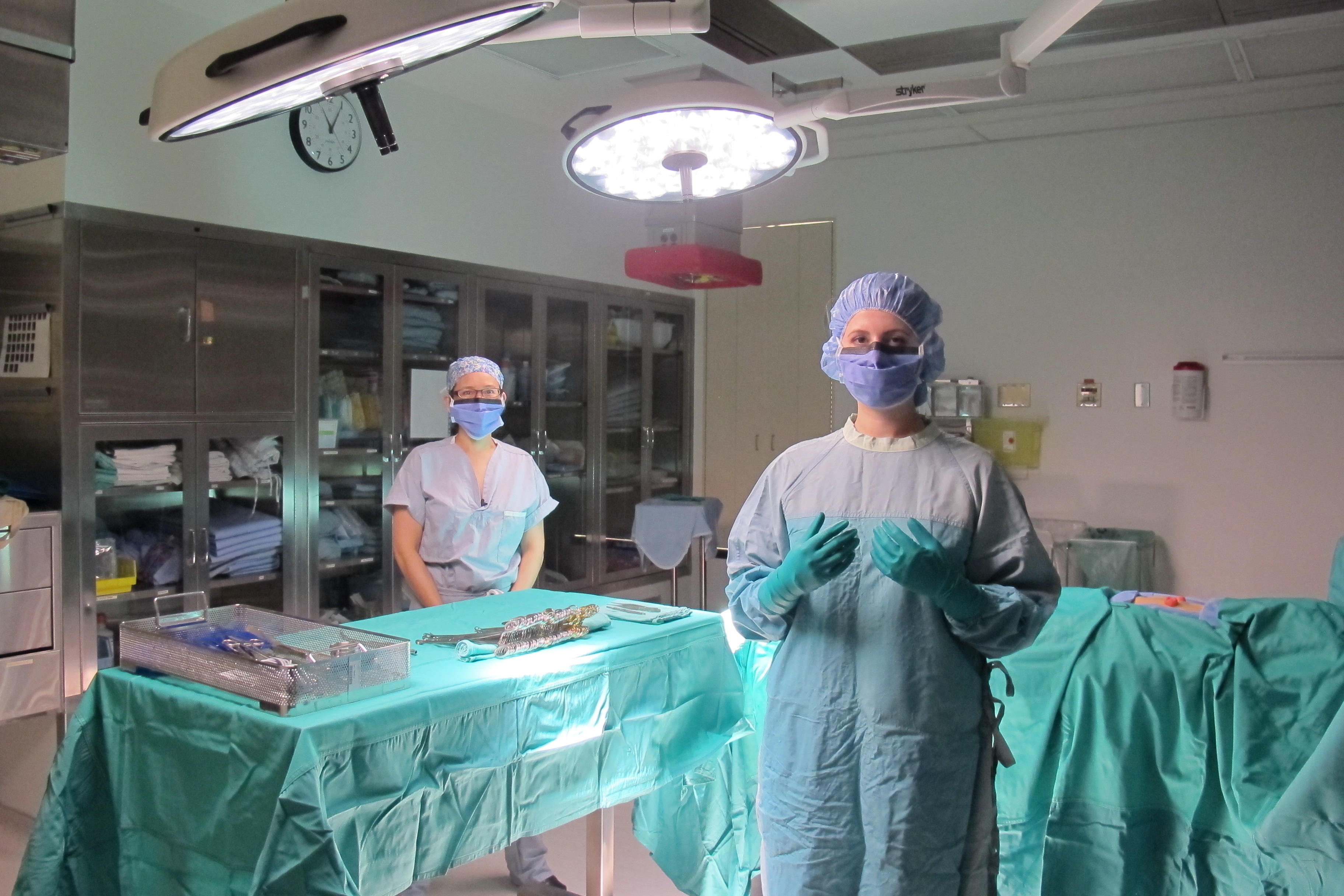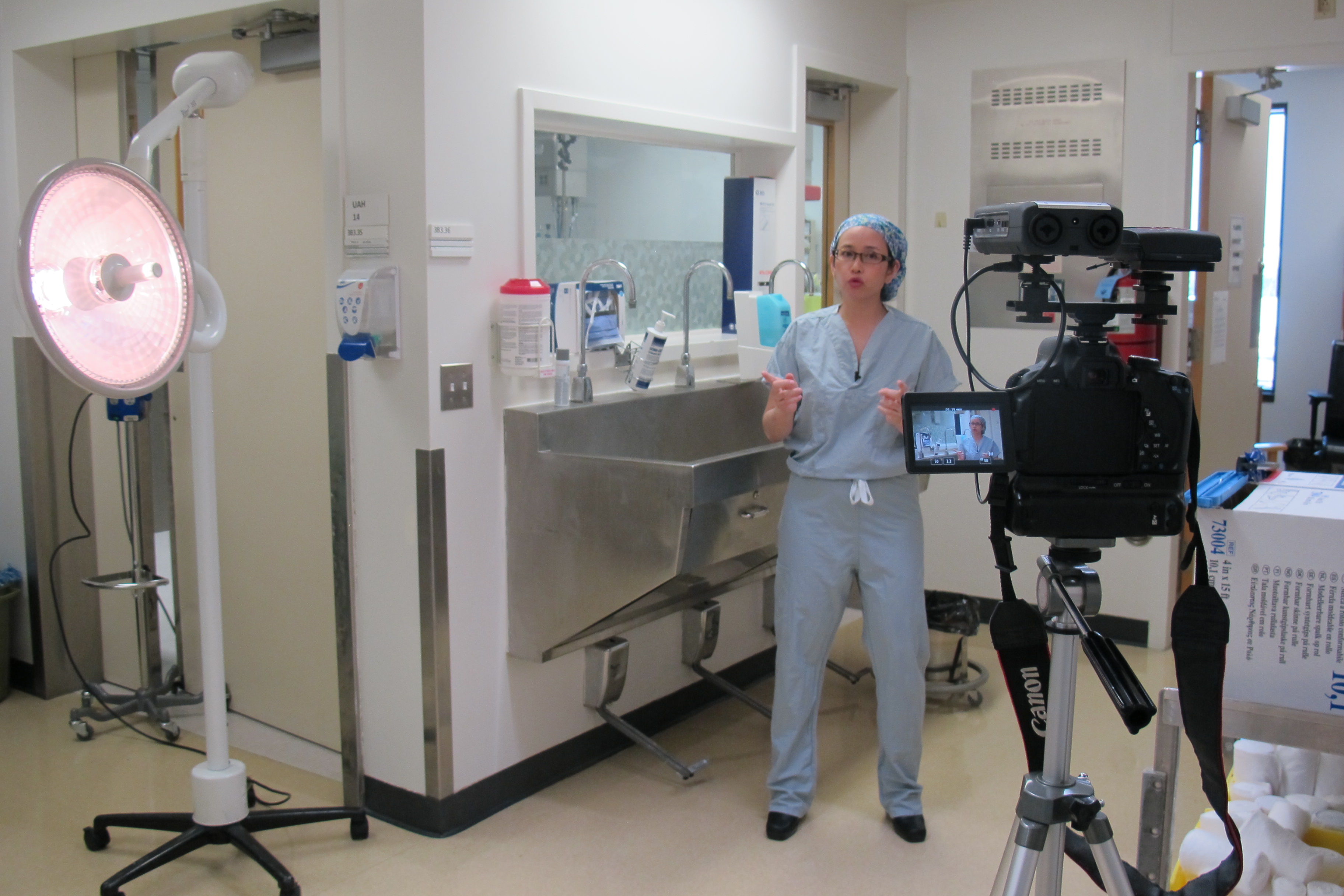
Rachel Khadaroo (left) and Stephanie Pilieci have produced a series of videos to better educate medical and nursing students about sterile techniques for the operating room.
Rachel Khadaroo entered the operating theatre at the University of Alberta Hospital (UAH), adjusted her gear, took a deep breath, and turned to face the camera.
"Are you ready? Should I have my surgical mask down for the camera?" asked Khadaroo, an associate professor of surgery, to a three-person crew of videographers and assistants―all U of A medical students.
It was the summer of 2016 and Khadaroo was in the beginning stages of producing a video project with the aim to better educate medical and nursing students about sterile techniques for the operating room. Seven videos were shot to address proper surgical scrub technique, common mistakes and provide tips on how to avoid them. Now complete, the videos are available to students at the U of A and have been posted on YouTube for other learners worldwide.
"Our ultimate goal is to protect patients from surgical infection," said Khadaroo, a surgeon and intensivist at the UAH. "Surgical infection is shown to be the leading cause of unplanned readmissions following surgery. It has a huge burden of morbidity and mortality for our patients and also on the health-care system, so trying to decrease the rate of surgical infection is essential."
"As soon as you cut the skin, there's a route for infection into the body right there," added Kenny Davidson, patient care manager for Operative Services at UAH. "If we can minimize that by having the whole team that's involved in the surgery prepared and ready, it definitely has a better outcome for patients."

The videos are a joint effort between the University of Alberta, the Surgical Infection Society and Alberta Health Services. The short films were created with the help of U of A medical student Stephanie Pilieci who researched proper sterile technique prior to the videos being made to ensure the accuracy of the information being shared. She believes the videos are a great resource for new learners who often feel intimidated entering the operating room.
"There is so much that we don't know, there is a lot of pressure on us to learn everything correctly and properly," said Pilieci. "It feels great to be a part of helping future students do that."
To ensure the videos were effective for training purposes, Khadaroo and Pilieci also created a randomized controlled trial to assess their impact on students. Nearly 130 medical students took part in the study which has been published in the journal Surgical Infections. A control group learned sterile technique from a nurse educator and then took a quiz to assess their knowledge. A second group watched the videos first and then took the quiz.
It was found that the control group was outperformed on average quiz scores by the group who watched the videos first (72 per cent vs 88 per cent). In a follow-up survey, students reported that the videos were more convenient, accessible, efficient, and useful for review.
While the results have led to the incorporation of the videos as an educational tool for U of A medical students and surgical trainees, Khadaroo hopes they are seen further abroad as well. The lessons and techniques demonstrated are internationally applicable, and can help surgeons meet a higher standard of care no matter where they practice saving lives.
The videos were made possible through a U of A Department of Surgery Summer Studentship and support from the Wynne Rigal Award. Watch them on the Surgical Infection Society's YouTube channel.